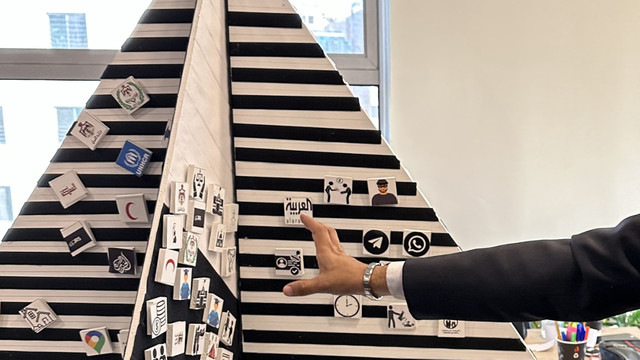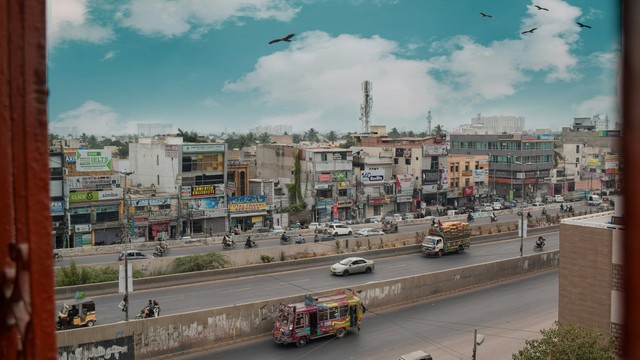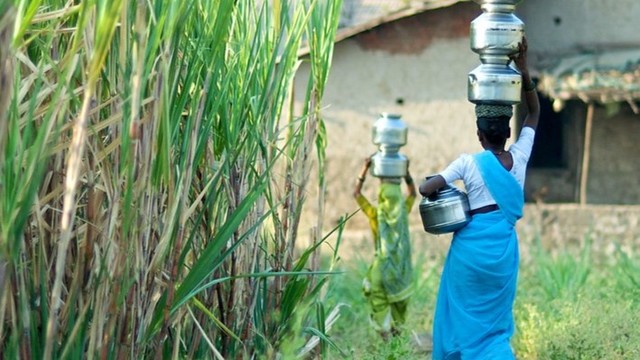How India’s civil society rose up in the face of COVID-19
As the pandemic overwhelmed India’s public systems and cut off the livelihoods of millions, civil society organisations offered a lifeline to its cities’ poorest and most vulnerable residents.


COVID-19 relief activities in Karnataka, India (Photo: Trinity Care Foundation via Flickr, CC BY-NC-ND 2.0)
The ‘second’ wave of COVID-19 caught India off-guard. It began in mid-March 2021 and by the end of April, daily infections had rocketed to over 400,000.
Cities including New Delhi, Mumbai and Ahmedabad were hit particularly hard leading to catastrophic failures of public and private healthcare systems. Hospitals ran out of beds, there were acute shortages of life saving oxygen and medicine to manage the symptoms of the virus became scarce.
Testing was inadequate and the rate of vaccination woefully slow. Data from official sources on the number of cases and deaths remained questionable. Yet in the face of these challenges, grassroots organisations and NGOs have played a leading role in the response by supporting informal workers and delivering essential healthcare.
While the pandemic affected all of society, the poor and vulnerable living in low-income and informal settlements and working in the informal economy were heavily impacted. The international press covered the unprecedented exodus of migrants from India’s cities in the spring and summer of 2020, triggered by the first wave.
However, the second wave of migration drive by the second wave of infection happened more silently – but with equally devastating impacts on the most vulnerable urban citizens. Given the failure of state machinery, the actions of civil society groups have proven critical in addressing health and livelihoods concerns for some of the cities’ poorest residents.
A safety net for informal workers
Civil society networks such as the Stranded Workers Action Network (SWAN) have been a lifeline for informal workers who suddenly found themselves without any means to sustain themselves. SWAN recruits volunteers working with grassroots civil society organisations to build a database of informal workers who had lost their jobs and needed financial help.
SWAN used online tools to link these workers to those offering financial relief. The money transferred to the workers – ‘micro transfers’ – provided a crucial ‘safety net’ to those without any financial or social security.
Anandita Adhikari, a SWAN volunteer, has hundreds of anecdotes of how micro-transfers sent to truck assistants, cargo loaders and street vendors enabled them to secure life-saving medicines, rations and travel to their villages.
The case of Rabia Khatun, a factory worker in Gurugram on Delhi’s southern border stuck with Adhikari. A single mother of four, Rabia worked in a small factory manufacturing spare motorcycle parts.
The factory closed during the second wave and Rabia could no longer afford food or rent. When she reached out to SWAN, they not only provided her immediate food and financial relief but also helped her navigate the bureaucratic process to secure government assistance earmarked for informal workers. Adhikari estimates that SWAN has supported 55,000 people like Rabia over the past year.
In the same town, the Martha Farrrell Foundation working on gender-justice issues is supporting domestic workers. Cooks, cleaners, nannies and gardeners – all these workers are part of the informal sector and provide essential services to India’s burgeoning middle class concentrated in commercial centres such as Gurugram.
However, this group’s livelihoods were cut off during COVID-19 when their employers went into isolation. The foundation provides ‘ration kits’ to these workers, with each kit feeding a family of five for a month. The foundation also provides information on how to access to critical financial and health support from government agencies.
Life-saving health care
Civil society organisations also moved in to fill the major gaps the pandemic exposed in India’s health system. Organisations such as the Hemkunt Foundation established makeshift health centres in Delhi and on its outskirts where COVID-19 patients could be administered oxygen for no charge.
For patients unable to reach the centres, the organisation tried to get oxygen cylinders or concentrators to their homes. One of the foundation’s workers, Harteerth Singh – who for a while became the face of the civil society response to the pandemic – underlined the critical importance of volunteering; Singh said that each volunteer would have likely helped save hundreds of lives during the second wave.
One of the foundation’s stories went viral on social media – where a heavily pregnant woman was unable to secure a hospital bed because she had COVID-19. Singh and his colleagues coordinated with various hospitals to finally find a bed – just in the nick of time, before the woman gave birth.
While deeply distressing scenes from across India continue to dominate national and international media, stories from the work of SWAN, the Martha Farrell Foundation and the Hemkunt Foundation demonstrate how civil society groups have mitigated some of the pandemic’s worst impacts.
Support needed to bolster civil society’s crucial work
While the government must do everything in its power to strengthen public systems to deal with such crises, it must acknowledge the life-saving support provided by civil society.
Their role must be bolstered through the provision of financial support, by including their representatives on key decision-making bodies and by forging deeper technical partnerships between government institutions and NGOs with experience of supporting the urban poor to withstand shocks and stresses.
Mounting a ‘whole-of-society’ response where the urban poor, NGOs and public institutions work in sync is the only way to deal with exigencies that will, almost certainly, impact cities across the global South into the future.



